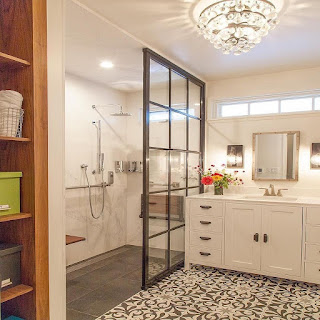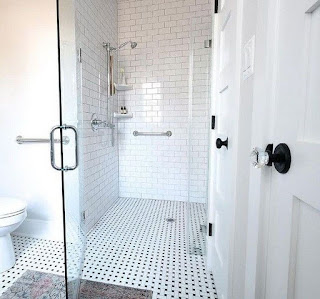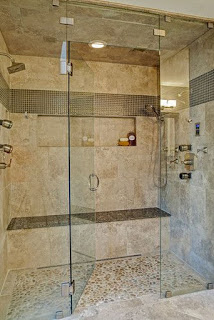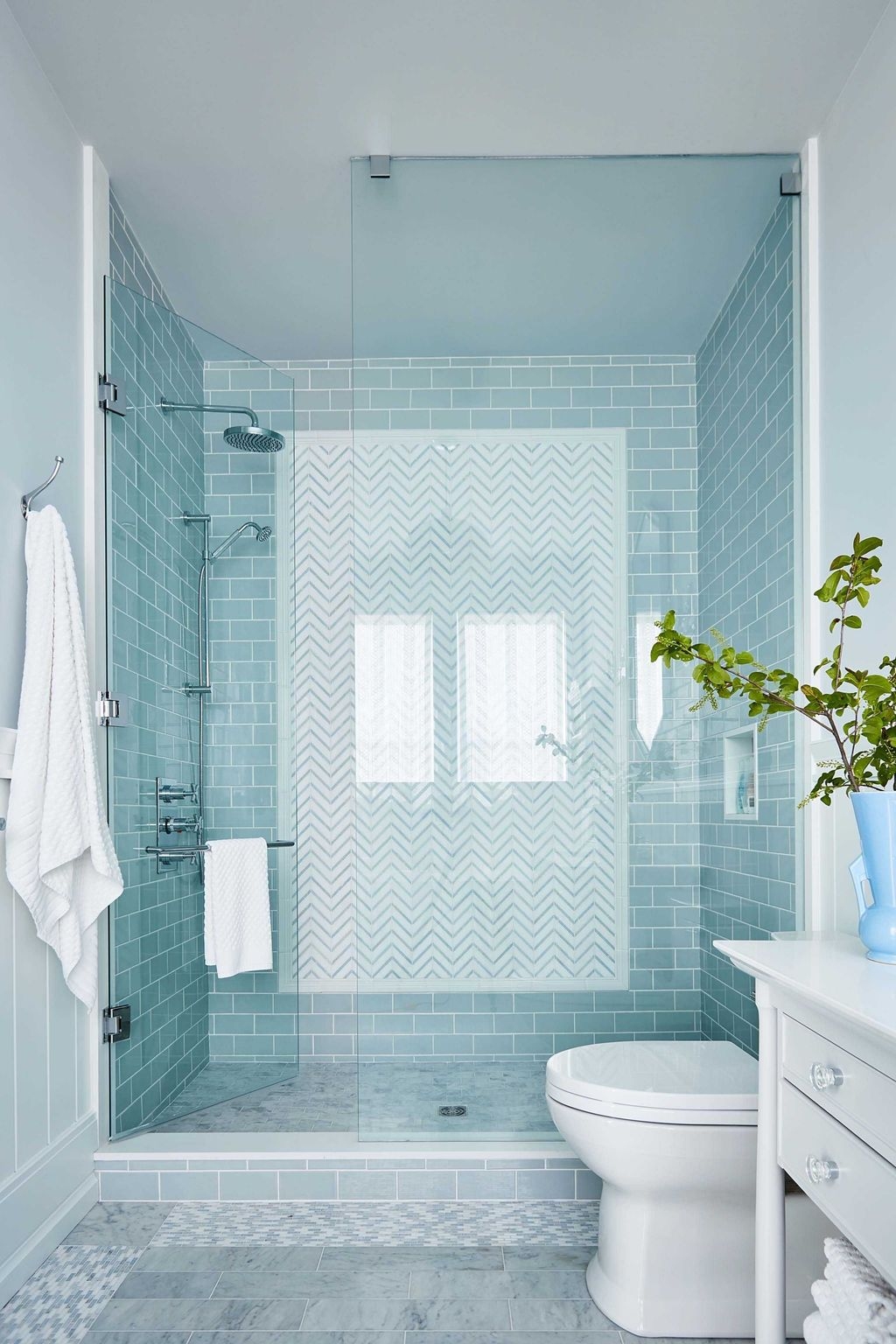35 Incredible Curbless Shower Ideas For House
The first thing to consider when planning a curbless shower is the amount of space that you have available in your bathroom. Once that is determined, you can begin thinking about sizing the shower to fit in the available space.
Often people remove standard bathtubs, which are typically 5 foot long and replace these tubs with a tub to shower conversion shower enclosure. Tub to shower conversion enclosures make the remodeling of a bathroom easier since these showers are built with the drain in the same general location as the bathtub drain.
The length as well as depth of a curbless shower is crucial. It is a lot more challenging to regulate and keep water in the shower if the depth (from the entry to the back wall) is small. Therefore, whenever possible the depth of the shower should be wide.
We will explore various sizes below. The added benefit of a deeper curbless shower is that it permits a more comfy showering experience for all.
Since the floor at the entry of the curbless shower must be flush with the room floor, the larger the shower, the easier it is to gradually slope the shower floor to the drain and still contain water.
The large size makes it easier to eliminate uneven, warped surfaces so all four wheels of a person’s shower mobility device stay in contact with the floor. Thus, the user is able to maintain better traction and control when maneuvering into and out of the shower.
A minimum floor area in which to maneuver both outside the stall as well as inside is necessary for people using shower wheelchairs. In a narrow stall enclosed by a flexible shower curtain, any small incremental movements of the bather to adjust position or reach the controls are likely to dislodge the curtain, causing water to run out onto the bathroom floor.
Many national accessibility specifications allow the shower insides to be as small as 30 inches deep and 60 inches long. Yet, 36 inches ought to be considered the minimal depth for any kind of curbless shower that will be used with any type of assisted device such as a wheelchair, walker or rollator.
Even at 36 inches, very careful attention must be paid to the floor transition and other water retention strategies. A depth of 42 inches is a significant improvement and 48 inches is even better. For most dwelling units, an adequate shower can be designed within the 36-inch to 48-inch width.
However, there are people who prefer larger shower areas and others for who need assistance while bathing. Many individuals favor bigger showers for people that require caregiver help while showering. A shower 5 feet by 5 feet permits sufficient room for an individual in a shower mobility device and also an assistant.
Often people remove standard bathtubs, which are typically 5 foot long and replace these tubs with a tub to shower conversion shower enclosure. Tub to shower conversion enclosures make the remodeling of a bathroom easier since these showers are built with the drain in the same general location as the bathtub drain.
The length as well as depth of a curbless shower is crucial. It is a lot more challenging to regulate and keep water in the shower if the depth (from the entry to the back wall) is small. Therefore, whenever possible the depth of the shower should be wide.
We will explore various sizes below. The added benefit of a deeper curbless shower is that it permits a more comfy showering experience for all.
Since the floor at the entry of the curbless shower must be flush with the room floor, the larger the shower, the easier it is to gradually slope the shower floor to the drain and still contain water.
The large size makes it easier to eliminate uneven, warped surfaces so all four wheels of a person’s shower mobility device stay in contact with the floor. Thus, the user is able to maintain better traction and control when maneuvering into and out of the shower.
A minimum floor area in which to maneuver both outside the stall as well as inside is necessary for people using shower wheelchairs. In a narrow stall enclosed by a flexible shower curtain, any small incremental movements of the bather to adjust position or reach the controls are likely to dislodge the curtain, causing water to run out onto the bathroom floor.
Many national accessibility specifications allow the shower insides to be as small as 30 inches deep and 60 inches long. Yet, 36 inches ought to be considered the minimal depth for any kind of curbless shower that will be used with any type of assisted device such as a wheelchair, walker or rollator.
Even at 36 inches, very careful attention must be paid to the floor transition and other water retention strategies. A depth of 42 inches is a significant improvement and 48 inches is even better. For most dwelling units, an adequate shower can be designed within the 36-inch to 48-inch width.
However, there are people who prefer larger shower areas and others for who need assistance while bathing. Many individuals favor bigger showers for people that require caregiver help while showering. A shower 5 feet by 5 feet permits sufficient room for an individual in a shower mobility device and also an assistant.






































Komentar
Posting Komentar